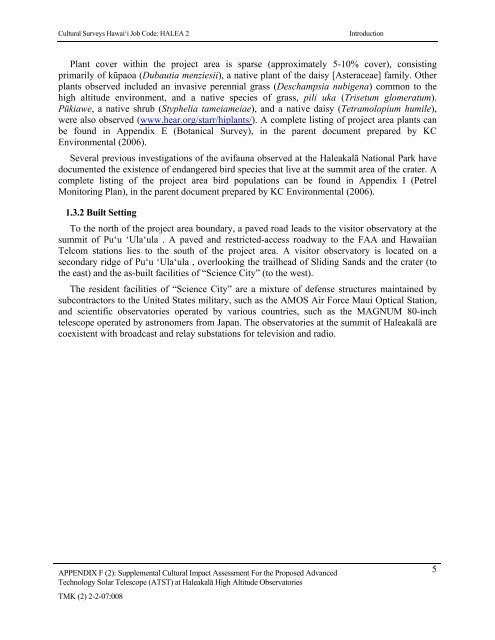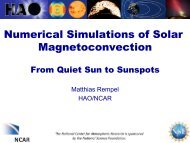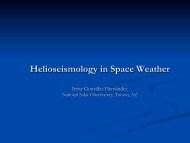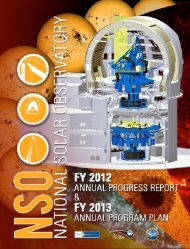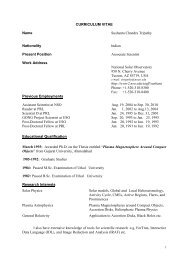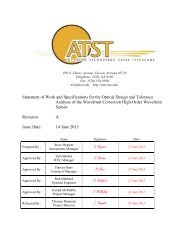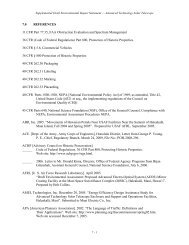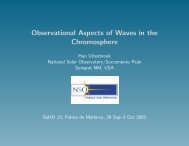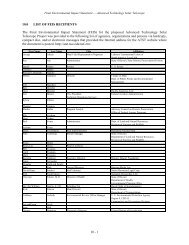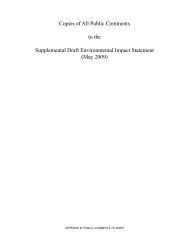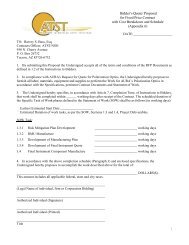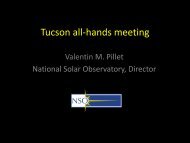F2 - ATST
F2 - ATST
F2 - ATST
You also want an ePaper? Increase the reach of your titles
YUMPU automatically turns print PDFs into web optimized ePapers that Google loves.
Cultural Surveys Hawai‘i Job Code: HALEA 2IntroductionPlant cover within the project area is sparse (approximately 5-10% cover), consistingprimarily of kūpaoa (Dubautia menziesii), a native plant of the daisy [Asteraceae] family. Otherplants observed included an invasive perennial grass (Deschampsia nubigena) common to thehigh altitude environment, and a native species of grass, pili uka (Trisetum glomeratum).Pūkiawe, a native shrub (Styphelia tameiameiae), and a native daisy (Tetramolopium humile),were also observed (www.hear.org/starr/hiplants/). A complete listing of project area plants canbe found in Appendix E (Botanical Survey), in the parent document prepared by KCEnvironmental (2006).Several previous investigations of the avifauna observed at the Haleakalā National Park havedocumented the existence of endangered bird species that live at the summit area of the crater. Acomplete listing of the project area bird populations can be found in Appendix I (PetrelMonitoring Plan), in the parent document prepared by KC Environmental (2006).1.3.2 Built SettingTo the north of the project area boundary, a paved road leads to the visitor observatory at thesummit of Pu‘u ‘Ula‘ula . A paved and restricted-access roadway to the FAA and HawaiianTelcom stations lies to the south of the project area. A visitor observatory is located on asecondary ridge of Pu‘u ‘Ula‘ula , overlooking the trailhead of Sliding Sands and the crater (tothe east) and the as-built facilities of “Science City” (to the west).The resident facilities of “Science City” are a mixture of defense structures maintained bysubcontractors to the United States military, such as the AMOS Air Force Maui Optical Station,and scientific observatories operated by various countries, such as the MAGNUM 80-inchtelescope operated by astronomers from Japan. The observatories at the summit of Haleakalā arecoexistent with broadcast and relay substations for television and radio.APPENDIX F (2): Supplemental Cultural Impact Assessment For the Proposed AdvancedTechnology Solar Telescope (<strong>ATST</strong>) at Haleakalā High Altitude ObservatoriesTMK (2) 2-2-07:0085


